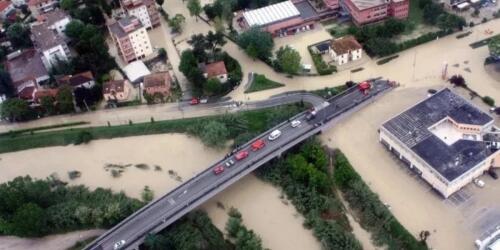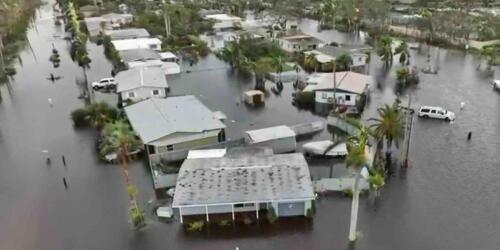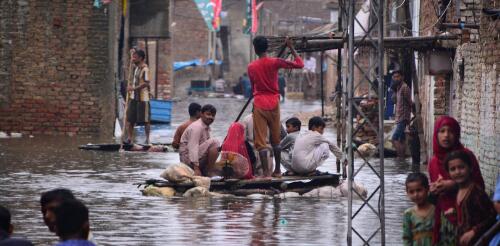Pakistan
The weekly round-up on the climate crisis and data on carbon dioxide levels in the atmosphere. Eleven dead, two missing, over fifty injured, enormous damage to homes and infrastructure.It is the sad balance of severe floods which devastated the Marche between 15 and 16 September.In two or three hours about 400 mm of rain fell, he said the Civil Protection, a third of the rain that usually falls in a year.The provinces of Ancona, Pesaro and Urbino were the most affected.In Senigallia the Misa river broke its banks and invaded the city center. Yes question on the real possibility of predicting an event of this severity, on the effectiveness of the Civil Protection weather warning systems and on the state of the prevention measures adopted in recent years by the Region and Municipality to limit the impact of extreme events, which unfortunately are increasingly frequent now at all latitudes. In the meantime have been opened two investigations, one by the Ancona Prosecutor's Offic...
The weekly round-up on the climate crisis and data on carbon dioxide levels in the atmosphere. “Loss and Damage” is the term used to describe how climate change is already causing severe and, in many cases, irreversible impacts around the world – particularly in vulnerable communities. As he explains to Carbon Brief the Prof.Saleemul Huq, director of the International Center for Climate Change and Development (ICCCAD) and pioneer of loss and damage research: “The term ‘loss and damage’ refers to the impacts of human-induced climate change affecting people around the world.Damages refer to things that can be repaired, such as damaged homes, while losses refer to things that have been completely lost and will not come back, such as human lives.” “We are losing infrastructure, agricultural land – and we are losing what we can call a hope of having sustainable economic growth and a future for all,” adds Ineza Umuhoza Gra...
Developing nations were justifiably jubilant at the close of COP27 as negotiators from wealthy countries around the world agreed for the first time to establish a dedicated “loss and damage” fund for vulnerable countries harmed by climate change. It was an important and hard fought acknowledgment of the damage – and of who bears at least some responsibility for the cost. But the fund might not materialize in the way that developing countries hope. I study global environmental policy and have been following climate negotiations from their inception at the 1992 Rio Earth Summit. Here’s what’s in the agreement reached at COP27, the United Nations climate talks in Egypt in November 2022, and why it holds much promise but very few commitments. 3 key questions All decisions at these U.N. climate conferences – always – are promissory notes. And the legacy of climate negotiations is one of promises not kept. This promise, welcome as it is,...
You may be hearing the phrase “loss and damage” in the coming weeks as government leaders meet in Egypt for the 2022 U.N. Climate Change Conference. It refers to the costs, both economic and physical, that developing countries are facing from climate change impacts. Many of the world’s most climate-vulnerable countries have done little to cause climate change, yet they are experiencing extreme heat waves, floods and other climate-related disasters. They want wealthier nations – historically the biggest sources of greenhouse gas emissions – to pay for the harm. A powerful example is Pakistan, where extreme rainfall on the heels of a glacier-melting heat wave flooded nearly one-third of the country in the summer of 2022. The flooding turned Pakistan’s farm fields into miles-wide lakes that stranded communities for weeks. More than 1,700 people died, millions lost their homes and livelihoods, and more than 4 million acres of crops and orchards,...
There’s an old joke about the fellow who has his left foot in a bucket of ice water and the right in a bucket of hot water, so that his overall temperature is average. That seemed to apply to the climate during 2022’s northern summer of extremes. Global warming is undoubtedly a factor, but just how the increasing extremes – heat waves, droughts and floods, sometimes one on top of the other – are related can be bewildering to the public and policymakers. As a climate scientist, I’ve been working on these issues for more than four decades, and my new book, “The changing flow of energy through the climate system,” details the causes, feedbacks and impacts. Let’s take a closer look at how climate change and natural weather patterns like La Niña influence what we’re seeing around the world today. The June-August 2022 global land and ocean surface temperature was 1.6 degrees Fahrenheit...




